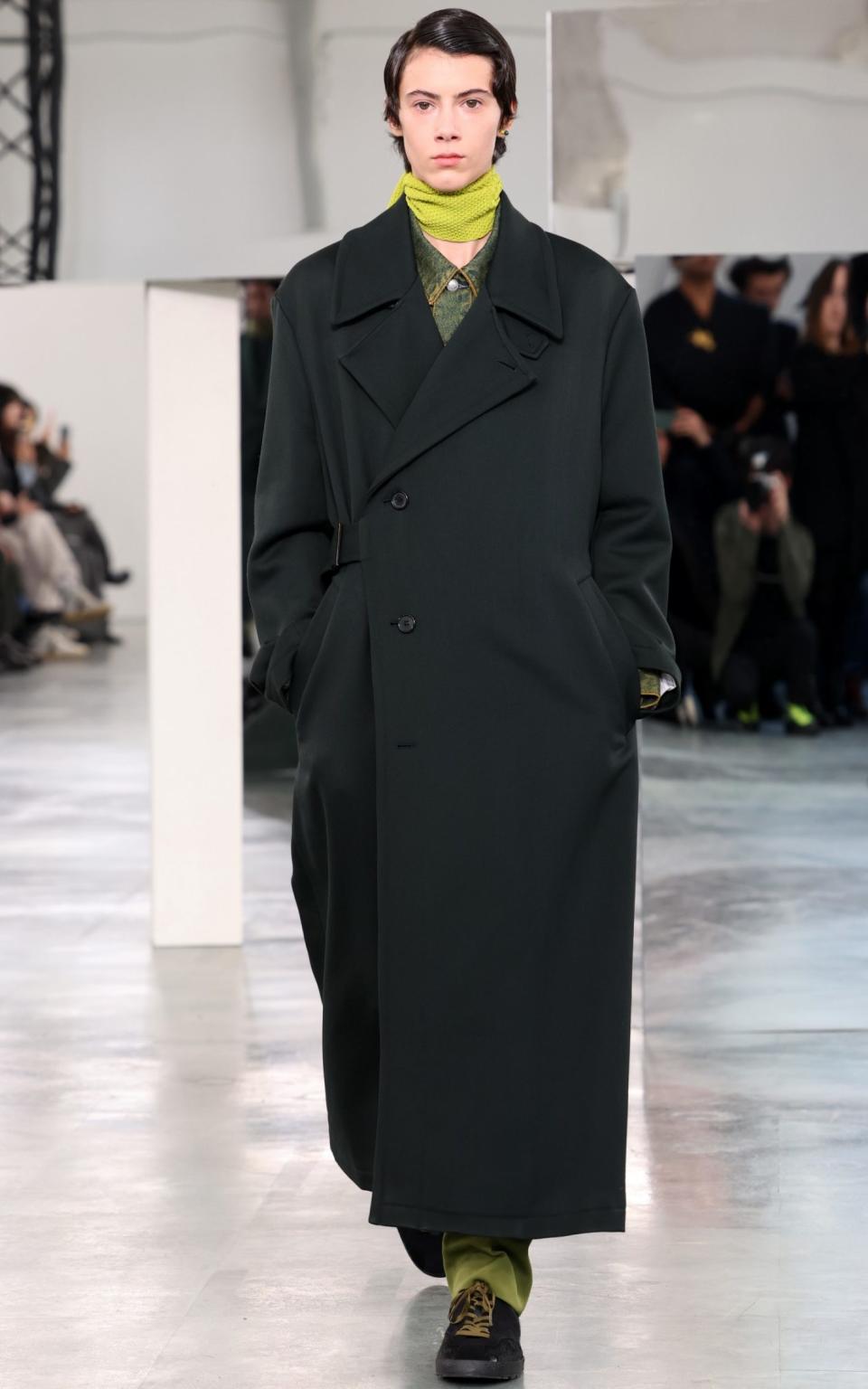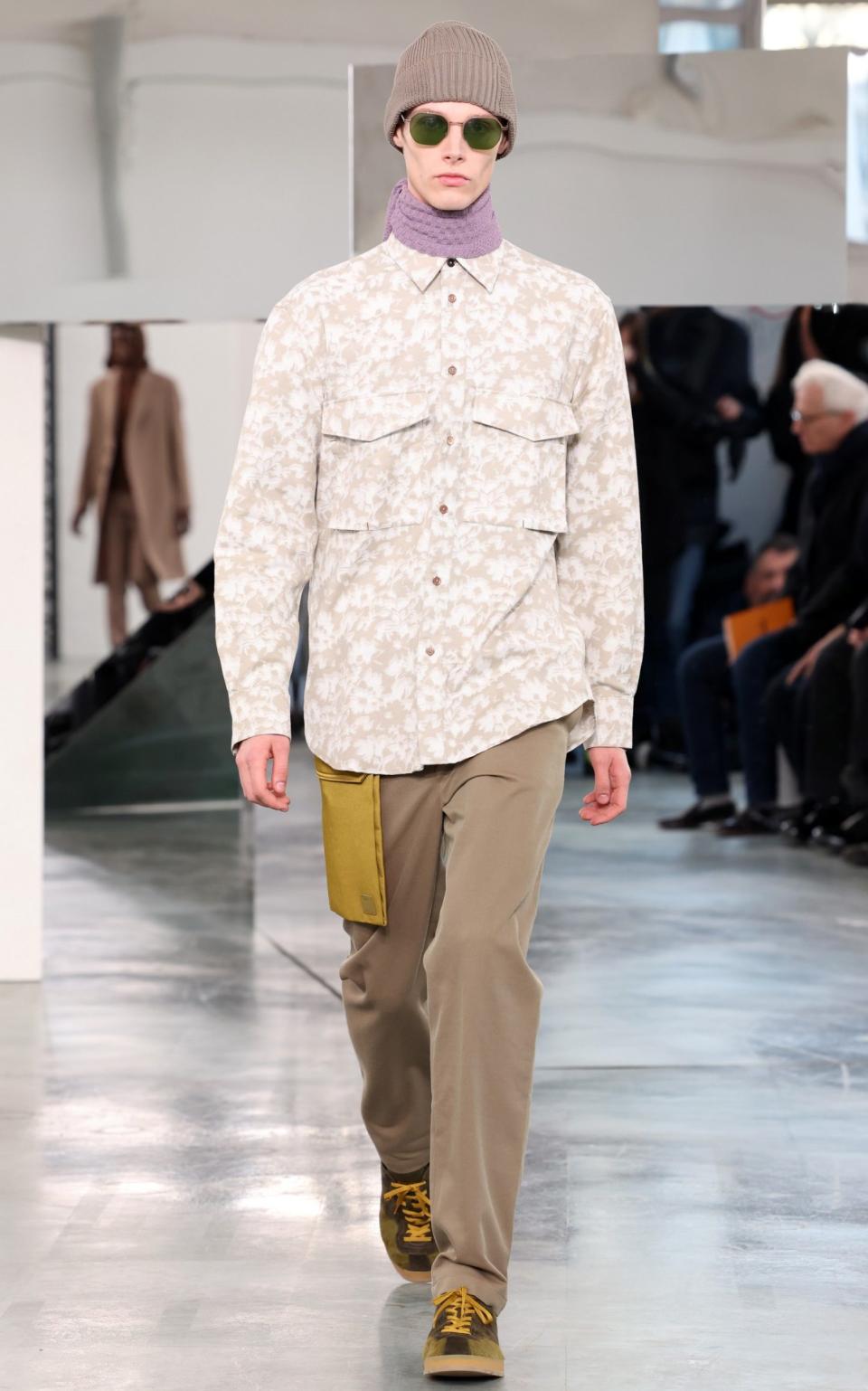Sir Paul Smith: ‘I make clothes that people can wear’

Paul Smith makes clothes “that people can wear,” he said backstage before his Autumn-Winter 2024/2025 show in the sun-bathed rec hall of a Left Bank university campus on Friday.
His VIP guests, who included Jane Birkin’s grandson, the French actor Ben Attal; Hong Kong musician Hins Cheung; Australian singer Ruel, and NFL players Kristian Fulton and Jesse Luketa, and who were kitted out in the new collection, proved his point. In a week of shows that can leave one asking, “Who on Earth are these clothes for?” Sir Paul’s offerings were clearly, and refreshingly, commercial.


This season, the 77-year-old designer introduced several new tailoring styles: “The softness of the construction and the shoulder, a square shape, a higher notch, slanting pockets,” he explained. “It’s all very subtle.” There were single-breasted suits, pleat-front pants, quilted gilets, suede bombers, and utilitarian coats in dark, rich tones, such as midnight blue, aubergine, and chocolate brown, and punctuated by acrid hues of ochre and lime.




Jackets had an inverted pleat down the spine, and with a gently cinching half-belt across the lower back – a natty nod to 1940s. And like always, there were luxurious, bespoke touches, like visible “pricking” – or hand-stitching – along the edge of lapels, and fine English fabrics, such as a Yorkshire gabardine from Huddersfield. “It’s about adding to your wardrobe – things that work with your existing pieces,” he said.


More bold and unexpected were the floral “Photogram” prints on an oatmeal-and-white utility shirt and moss-green maxi coat. Sir Paul was inspired by Beaux Arts wallpapers – “I always look to interiors for ideas,” he said – as well as by May Ray’s “rayograph” pictures in the 1920s. Sir Paul is a great amateur of photography, with masterworks from his collection on display at his Covent Garden headquarters.


Smith, who founded the brand with his wife Pauline in 1970, now sells in more than 60 countries – top markets include Italy, France, the United Kingdom and the United States, where his West Hollywood boutique, with its bubblegum-pink façade, is the most Instagramed store in California.
But it is Japan – where men still dress formally for work and in life, and there’s great reverence for English style – that is far and away his largest, accounting for some 40 per cent of sales. Since 1983, Paul Smith has had a licensing deal with Itochu Corp.; the trading firm also holds a minority stake in the company – “about 18 per cent,” Sir Paul said.
The last few years, with the Covid-19 pandemic, Brexit, the elimination of duty-free shopping in the UK, the war in Ukraine – he had a Russian franchisee, which he eventually cut – and, most recently, inflation have been challenging, with the company reporting earlier this month its fourth annual loss in a row. “It’s been a tricky time,” Sir Paul admitted. “But we’re slowly getting back.” Big luxury groups and private equity investors regularly approach him to see if he is willing to sell. Not for the moment, he responds. But, he concedes: “Given my age, I probably will do something soon. What’s important is to not change the character of the company. We care about people, you know. It’s from the heart.”
Dana Thomas is the author of Fashionopolis: The Price of Fast Fashion and the Future of Clothes, published by Bloomsbury.


